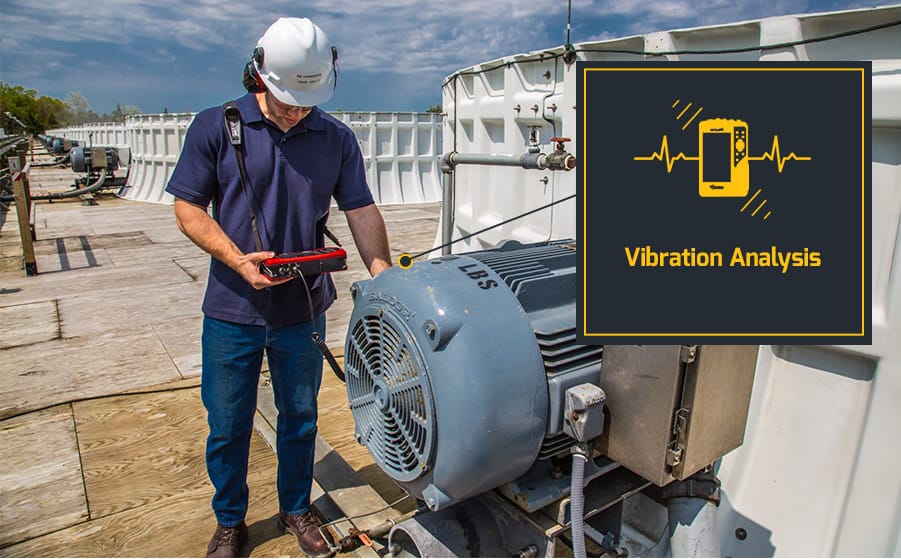
Vibration analysis can be divided into two broad categories; route based vibration analysis or commonly referred to as condition monitoring and specific machine condition diagnostics. Both use the same equipment and techniques for data acquisition; however, the method of use and types of data collected may be significantly different.
The Benefits Of Vibration Analysis
Diagnosis Of Equipment Imbalance
Identification Of A Misalignment Condition
Determining Mechanical Looseness Condition
Identifying Drive Belt Problems
Identifying Bearing Element Defects
Gearbox Analysis For Gear Tooth Wear, Gear Misalignment
Determining Motor Rotor Bar Problems
Route Based Analysis
Route based vibration analysis or condition monitoring, as it is often referred to; is used to collect vibration data on a specific list of rotating equipment on a routine interval of time; the time interval often being weekly, monthly, quarterly or annually. Which equipment to be included on the route is dependent on how critical the equipment is to production, the cost of the equipment, the size of the equipment, or even the location of equipment.
Each piece of equipment on the route is listed along with the bearing positions. A name is assigned for each piece of equipment and each bearing position along with one, two or even three different directions for each bearing position i.e. horizontal, vertical or axial. During the routine data collection process, a vibration probe is temporarily affixed to the position/direction via a small magnet while the vibration data is collected into the portable analysis equipment. Once data has been collected at all the equipment/vibration points on the route, the data is downloaded into a proprietary database for analysis and storage.
The primary function of the data analysis is to determine if any change has occurred in the vibration signatures since the previous data was collected. The secondary analysis involves an evaluation of the vibration spectral signatures to isolate frequencies for determination of bearing condition, excessive running speed vibration, looseness within the equipment, or equipment misalignment. A closer analysis of the data can determine how much one of these anomalies has progressed since the previous vibration data was collected.
Establishing a vibration route is very time intensive requiring attention in identifying each vibration position, each bearing manufacturer’s number for that position, the rotational speed of the element at each position, drive belt lengths, sheave diameters, gear teeth for each gear in gearboxes, numbers of vanes on fan and pump units etc. All this information should be included into the programming of the vibration route prior to the first set of vibration data collection.
Machine Diagnostics
Quite often a plant’s maintenance manager experiences a problem with a particular piece of equipment but can’t quite determine the cause for the problem. He will hire a vibration analyst to collect vibration data on the equipment in question to better advise him of the cause or source of the problem. When this is done, vibration data will be collected at the equipment bearing locations so an analysis can be done on that specific data. In order to form an opinion of the problem, the analyst requires as much of the equipment information as possible which is used in the route based analysis. The major component missing when doing an individual machine diagnostics is the historical data for comparison purposes.
Over the past twelve years we have used vibration analysis equipment to diagnosis vibration problems associated with vertical pump motors at numerous water and wastewater treatment facilities. The obvious rotational imbalance problems were resolved with the attachment of trim balance weights on the vertical motors. The more complex resolutions involved identification of resonance frequency associated with the rotating equipment, mounting bases and structural deficiencies. Resolution of these cases involved modification to the structures or installation of dynamic absorbers to transfer the vibration from the structure into the absorber. Although identification of the root cause was sometimes difficult, none went unresolved.

